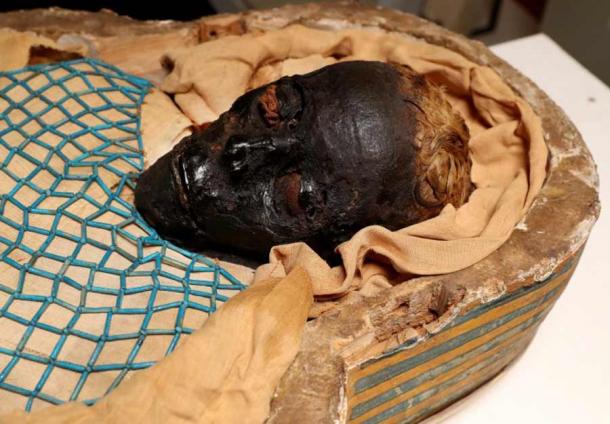Malta’s prehistory is as dazzling as it is opaque. The excavations and research by archaeologists and other academics have been incredibly thorough, and have helped to create fantastic insights into the culture behind some of the most incredible and unique megalithic architecture in the world.
However, there are still many mysteries about the people who built these structures, and it is this unknown element that creates a knowledge vacuum. This is habitually filled with sensationalist theories, something that is boosted further by a lot of confusion in the narrative. It’s also true that, whilst these sites, some of which are recognized by UNESCO, get a lot of attention, there are many lesser-known megalithic monuments and strange finds on the island. These help to build a more complete, and an even more complex, picture of these ancient people.
Minor but Monumental
Although the smaller and less famous megalithic sites in Malta tend to be off the beaten track and a little on the scant side, the large blocks and careful masonry still provide important testimony to the activity of the ancients. The temples of Ġgantija and the Xagħra Stone Circle necropolis in Gozo are internationally famous, and stand just five hundred meters (546 yards) apart. But what’s often overlooked by visitors is that, close by and sat in the middle of a field, the remains of another temple façade can be found.

Ggantija altar – One of many different types of altars in the better-preserved Maltese temples. (© Megalith Hunter)
Called Santa Verna, after a later medieval church built on the site, the megalithic blocks have a typical stone bench running alongside them, just like at the world famous Ħaġar Qim and Mnajdra sites. The most recent excavations conducted by the FRAGSUS Project found that Santa Verna was first inhabited in the Early Neolithic, before being abandoned. The site was resettled again in 3,800 BC, and these later occupants erected a five apse temple with a south east orientation exactly like that at neighboring Ġgantija.

Santa Verna temple facade and bench – One of the oldest temple sites in Malta dating back to 3800 BC. (© Megalith Hunter)
Also in Gozo, there are two megalithic sites close to Għajnsielem which are on private property but can be viewed from the road. L-Mrejżbiet appears to be the remains of a megalithic stone circle . The only other stone circle from the “temple period” recorded on the islands formed the surface level enclosure surrounding the entrance to the hypogeum in Xagħra. Since l-Mrejżbiet hasn’t been excavated, perhaps artifacts, hypogea or recumbent stones lie just underneath the surface. It’s an intriguing possibility!

Santa Verna temple from the south. Part of a megalithic landscape including the Xaghra Circle and Ghgantija. (© Megalith Hunter)
North of l-Mrejżbiet, just across the modern road, are the megalithic remains of Borġ Għarib (also called Tal-Qigħan) which appear to be two walls of a typical apsidal temple. This site has also not been excavated, but its appearance is clearly reminiscent of other temple complexes. Several kilometers to the east is the Qala menhir (il-Ħaġra l-Wieqfa) which, although now surrounded by urban developments, must also have once formed part of a megalithic structure.

Borg Garib Temple – A few megalithic remains on the outskirts of Gajnsielem in Gozo. (© Megalith Hunter)
Connected by Processional Routes?
Two other ruined Maltese temple sites are those of Ta’ Marżiena in Victoria, and Borġ l-Imramma on the Ta’ Ċenċ Cliffs. Ta’ Marziena may well have been a five apse temple in the same style as Ġgantija and Santa Verna. Borġ l-Imramma is too damaged for any sort of a layout to be concluded but what’s interesting is its proximity to two dolmens, one of which is in an excellent state of preservation.
The Maltese dolmens are thought to be from the later Bronze Age rather than contemporary with the temples, but this is based on limited evidence from one which was excavated on the mainland. Despite this, there’s still a chance the megaliths were all a part of the same culture.
The two dolmens at Ta’ Ċenċ overlook the valley below and are within sight of the Ta’ Blankas olive grove and public garden which has mysteries of its own. This olive grove has a small dolmen and two sets of “ cart ruts ,” the strange parallel tracks that haunt the islands in their hundreds. These are certainly very ancient, but at the same time, their date or function remains unknown.

Ta’ Blanks cart ruts – One of the hundreds of mysterious and ancient parallel tracks that litter the Maltese islands. (© Megalith Hunter)
There’s also a stone avenue leading up to the dolmen which brings images of ceremonial processions to mind. It’s conceivable that it even led all the way up to the Ta’ Ċenċ dolmens!
Just looking at Gozo, a picture is forming of a much denser megalithic landscape than is generally known. It’s hard to imagine what sort of people and what size of population needed this many megalithic sites for their rituals.
The same story is repeated on the Maltese mainland with menhirs, dolmens and faint temple remains littering the countryside. From the megalithic blocks of Ta’ Raddiena that sit inconspicuously on the side of a main arterial road, to the remains of the Buġibba Temple which stand defiantly in the middle of the grounds of a hotel, the ancient megalith builders created a lot in their laborious enterprise.
Remarkable Artifacts
Excavations at the Santa Verna temple found that snail figurines and an obsidian arrowhead had been embedded in the walls, possibly during its construction or at some point while it was in use. If this was a ritual deposition then it is similar to those at Ġgantija where seashells, a horn and pottery shards were found in a bowl under the enormous threshold slab at the entrance to the south temple.
Similarly, small polygonal tiles were found placed against the wall foundations of the temple. These served no structural purpose and wouldn’t have been visible from above ground. It’s thought they too had some sort of symbolic meaning.
Archaeologists generally think ritual feasting was taking place inside the temples, but the exact nature of the ceremonies and belief systems is a mystery. The entrances to many temples have holes carved into the paving slabs, as do some of the apsidal rooms within them. At Tas-Silġ in Marsaxlokk, which can be visited by appointment only, a threshold stone with three holes carved into it is one of the few megaliths remaining.
One theory is that these were libation holes for pouring ritual offerings upon entry into the sacred precinct. Another idea mentioned in the Temple Places monograph by the FRAGSUS Project is that they were for wooden stakes, which displayed animal skulls on top of them. Either way, they make walking into the temples an inconvenient obstacle course. That said, practicality doesn’t seem to have been at the forefront of the ancestors’ activities.

Qala menhir- It may have been part of a much bigger megalithic structure in the Neolithic period but is now surrounded by urban development. (© Megalith Hunter)
One peculiar fact about the temple people is that there’s no evidence for them having consumed seafood, even though the islands are small and the Mediterranean is easily accessible. Seashells were used for decoration and burial, but marine life wasn’t a part of the diet. This could mean it was regarded as sacred.
Instead, the temple people went to great lengths to grow food and slaughter animals. Gigantic and miniature vessels were both facets of temple life and speculating on what they contained is another journey into the weird and wonderful. An enormous bowl might have been used for communal feasting but the tiny pots seem quite useless. Perhaps they were created for small delicacies , or maybe they only had a symbolic purpose?
Decoration and Variety
As well as putting a lot of time and resources into erecting megalithic structures, the temple people carved many statues, figurines, patterns and altars. Prehistoric art is found in many ancient societies all the way back to the Paleolithic, but is it never expected on a grand scale. This is because hunter gatherers and early farmers were largely concerned with activities related to survival, and anything beyond that would have seemed superfluous and a waste of time. So, whatever drove the temple people to make such intricate carvings must have been highly significant to their lives.
Many different megalithic structures are referred to as “ altars” but their designs vary. At Ħaġar Qim an altar was discovered carved with what looks like a plant, a tree or a spine. The same temple complex has mushroom- and trapezoid-shaped altars, all apparently serving the same purpose.
At the Tarxien Temples, a huge altar was found carved with spirals and a square portal on top. It contained animal bones and a flint knife. The altar at Ġgantija is undecorated, and made of three vertical pillars holding up a horizontal slab. So, what was going on? Why did the temple people create so many different types of altars, and why do some temples have none at all?
Bizarre Bones at the Hypogeum
Some of the most famous stories about ancient Malta relate to the Ħal Saflieni Hypogeum. Popular literature talks about thousands of disarticulated skeletons , long-headed skulls and disappearing rock art.
Dating from between 3300-3000 BC, the Hypogeum is thought to have served a mixed purpose during its history, as both a necropolis and a temple of the living. A new exhibition at the National Museum of Archaeology on Malta, which displays the skulls excavated from the Hypogeum, has helped to dispel some of the myths around the complex.
The “thousands of bones” was only an estimate by the famous archaeologist Temi Zammit who excavated the hypogeum in 1910, based on a large quantity that were found in one space. Most bones disintegrated when handled due to the damp soil conditions they were found in.
In his excavation report, Zammit also mentions that only eleven skulls survived and that they were dolichocephalic or long-headed. These are now on display at the museum and it seems in fact that only one cranium has an abnormal size and shape. The information board explains that this is due to a medical condition called Craniosynostosis. Other crania may have been misinterpreted in the initial reports, because the parameters for measuring them were different from what they are today.
The exhibition also looks at the age and sex of the skulls and evidence of illness, giving a fantastic insight into the lives and deaths of these Neolithic people. The disarticulated nature of the skeletons is still a bit of a question mark, but is thought to have been due to reuse of the burial spaces over many years.
The Sacred Maltese Landscape
More than thirty temple and hypogea sites have been discovered over the years, including those that have unfortunately been destroyed, and there may be many more. Rarely does a temple stand alone. It’s normally one of a group of structures, and this in turn, is usually less than two kilometers from another temple complex.
There are a number of theories as to why the ancients arranged their monuments in relation to the landscape and each other in the way that they did. Their proximity to springs is one of the most practical reasons for their location, since it gave the ancients access to fertile soil and an abundant water source, both necessary for sustaining activities on the sites. It’s also thought that this type of water source may have had ritual significance which influenced the positioning of the temples.
In the modern, built-up landscape today, it’s difficult to imagine some of these megalithic complexes being within sight of each other, but many were. The FRAGSUS Project did a “viewshed” analysis of known megalithic sites on the islands. It found that temples with inland views were mostly also in sight of one or more megalithic monuments, whereas those oriented towards the sea were not. So, perhaps both types of placement were somehow important.

Tal-Qadi Temple – The only temple pointed to the northeast and the location of the strange “star tablet” artifact (© Megalith Hunter)
Ħaġar Qim and Mnajdra are aligned with the solstices and equinoxes and it’s thought this was deliberate. At the Tal-Qadi Temple near Salina Bay, a stone tablet was found with markings that look like a crescent moon and stars. Research has been done to work out which part of the night sky it represented, and what relevance this had to the orientation of the temple. There are also pendants dated from the temple period which could depict the sun’s rays, suggesting the cosmos held some significance beyond the mundane.
So, like many international megalithic sites, astronomical knowledge would appear to have been important to the temple people of Malta. It is of course fun to speculate that the temples made up a complicated multi-site observatory that monitored the skies for both practical and ritual reasons, and was far more sophisticated than that needed to simply monitor the solstices or equinoxes.
But, with many sites being ruined or no longer extant, their original size and orientation is impossible to determine. It is quite clear though, that the Neolithic landscape of the Maltese islands was overflowing with megalithic monuments, built by a cultivated people with knowledge and skills far beyond that expected of the time period.
As the MegalithHunter, Laura explores her fascination with the megalith builders of the Neolithic. You will find more of her investigations on her media channels: Instagram: https://www.instagram.com/MegalithHunter; YouTube: https://tinyurl.com/yxy4chua; Website: https://www.megalithhunter.com; Facebook: https://www.megalithhunter.com
Top image: Ta’ Cenc dolmen, one of the best-preserved Megalithic dolmens in Malta, sits on the edge of the Ta’ Cenc Cliffs. Source: © MegalithHunter
By Megalith Hunter
References
Malone, C., Grima, R., McLaughlin, R., Parkinson, E. W., Stoddart, S., & Vella, N. (2020). Temple places: Excavating cultural sustainability in prehistoric Malta. [Book]. Available at: https://doi.org/10.17863/CAM.62630
Ruffell, A., Hunt, C. O., Grima, R., McLaughlin, R., Malone, C., Schembri, P., French, C., & Stoddart, S. K. F. (2018). Water and Cosmology in the Prehistoric Maltese World: Fault Control on the Hydrogeology of Ġgantija, Gozo (Maltese Islands). Journal of Archaeological Science Reports , 20, 183-191. Available at: https://www.um.edu.mt/library/oar/handle/123456789/48732
Trump, D.H. (2002). Malta Prehistory and Temples. Santa Venera: Midsea Books.
Zammit, T., Peet, E., and Bradley, R. N. (1912). The Small Objects and the Human Skulls Found in the Hal-Saflieni Prehistoric Hypogeum at Casal Paula, Malta. Malta: [s.n.]
Related posts:
Views: 0
 RSS Feed
RSS Feed

















 July 8th, 2021
July 8th, 2021  Awake Goy
Awake Goy 




 Posted in
Posted in  Tags:
Tags: 
















